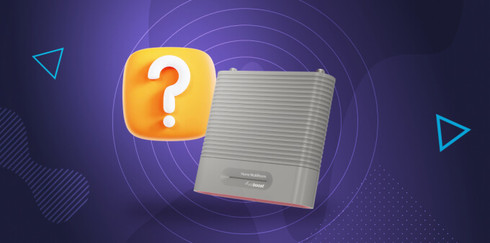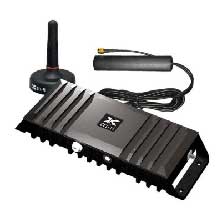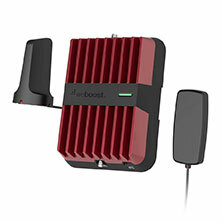How Do Cell Phone Signal Boosters Work?
What is a Cell Phone Signal Booster?
If you consistently experienced poor cell service and dropping calls at home, in the office, or on the go, then you've probably heard of cell phone signal boosters. They're also known as cellular enhancers, amplifiers, and repeaters.
Cell phone signal boosters are devices designed to enhance cellular signal strength and improve coverage, reducing dropped calls, failed texts, and slow data. But, how do they work and do they actually work? We have the answers!
Take advantage of our system design and installation services. Learn more or call us for a free consultation: 1-800-638-6336.
How Do Cell Phone Boosters Work?
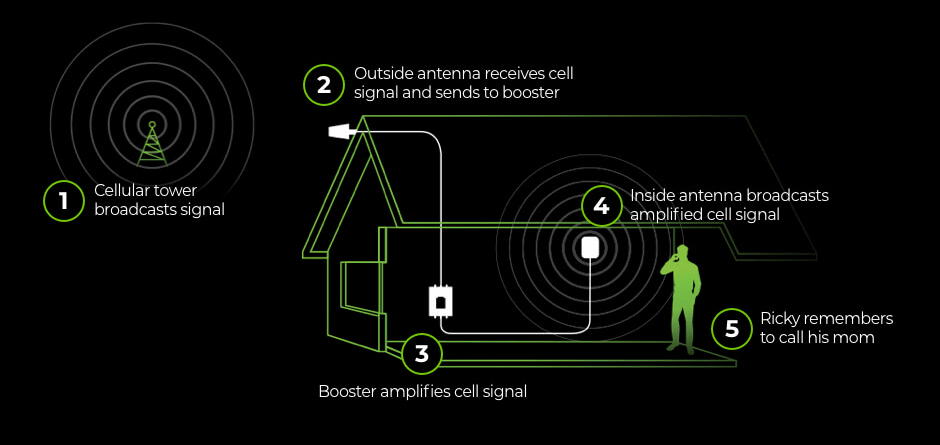
Cell phone boosters take your existing outside cellular signal and deliver a more reliable signal indoors. Bidirectional, they also send a stronger signal to the tower, improving your connection. This is done in three simple steps:
Step 1: Outside Antenna Captures Cellular Signals
The outside antenna, usually mounted on the roof of a building or vehicle, picks up any available cell signal within its supported frequency range from nearby cell towers. You can view the signal booster's spec sheet to see what frequencies the antenna will capture.
There are two types of outdoor antennas:
- Omnidirectional: These antennas capture cellular signals from all directions, 360°. They are good for communicating with multiple towers from different carriers at the same time. They are also easy to install. You'll find these antennas commonly paired with vehicle signal boosters and some building boosters.
- Directional: These antennas capture cellular signals from one direction, requiring them to point at a cell tower. Radiation beam varies across antennas but tends to range between 10° to 90°. With a more focused beam, they are more powerful than omni antennas tough slightly more challenging to set up. They are best for weak signal areas or those wanting to boost one or two carriers. These antennas are commonly paired with building boosters and stationary RV units.
Step 2: Amplifier Boosts Cellular Signal
The amplifier receives the captured cellular signal via coaxial cable and boosts it.
There are two types of amplifiers:
- Multi Carrier: These units can boost multiple carriers at the same time.
- Single Carrier: These units can only boost one cellular carrier at a time. Though, they are more powerful.
Whether signal carrier or multi-carrier, amplification power, reach, and coverage capabilities vary by unit.
Amplifiers with a higher gain and uplink power offer a stronger boost and greater reach to cell towers. This is extremely helpful for areas with weak outside cell signal. Signal boosters with a higher downlink power are able to provide greater coverage.
Step 3: Inside Antenna Broadcasts Boosted Cellular Signal
The inside antenna receives the boosted signals from the amplifier and rebroadcasts them in your home, office, or vehicle. All cellular devices within the coverage area will automatically receive improved cellular reception.
There are a couple of indoor antennas available, each designed for a specific application:
- Dome Antenna: Omnidirectional, these ceiling-mounted antennas broadcast equal amounts of cellular signal in every direction. Thus, they are best for open-concept layouts. Applications include homes and commercial buildings.
- Panel Antenna: Directional, these wall or ceiling-mounted antennas focus their power in a single direction. Radiation beam ranges from 45 to 70 degrees. They are great for hallways or high-ceiling areas. Applications include homes, commercial buildings, and stationary RVs.
- Whip Antenna: These antennas are omnidirectional and attach directly to the amplifier, making installation very easy. They are commonly used with small home units and some RV boosters.
- Desktop Antenna: These antennas are directional and can be placed on any flat surface a few feet from the booster. You have the flexibility to move it around so it can cover your desired area. They are kitted with small home units and some RV boosters.
- Patch Antenna: This is the most common type of antenna paired with vehicle cellular signal boosters. They are directional and easy to install.
Do Cell Phone Signal Boosters Really Work?
Absolutely!
As long as you have a sliver of cellular signal outside, cell signal boosters work.
There are a lot of tests and reviews out there proving that they really do work. Here are some examples:
TheFitRV put a Drive X RV to the test in a desert. Download speed improved by 24.3 times and upload speeds by 6.25 times.

Engagement saw great results from the Drive Reach in the mountains. Bars increased from 1 to 3 and download speeds skyrocketed from 2 Mbps to 24 Mbps.

The Antenna Man tested the HiBoost 10K Smart Link. The unit added three bars and quadruple download speeds once turned on.

The only time a signal booster will not work is when you're in a total dead zone.
Cell Phone Boosters That Actually Work
There are a lot of junk boosters out in the market. So, it only makes sense to be skeptical about the legitimacy of cell phone signal boosters. All of our boosters are FCC and IC-certified. They work as claimed.
Here are some of the most popular cell phone boosters that actually work:
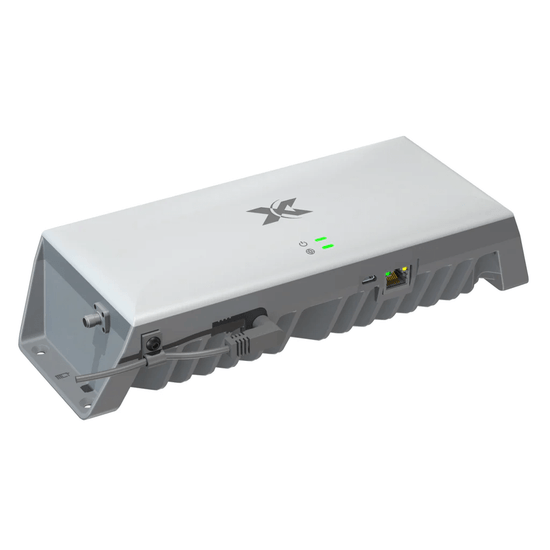
Cel-Fi GO G41
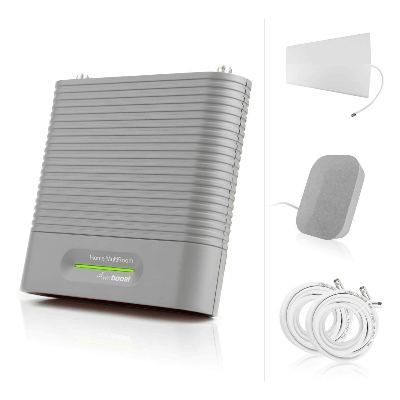
weBoost Home MultiRoom
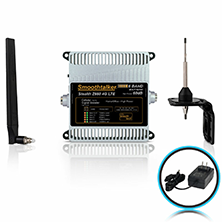
SmoothTalker Home Stealth Z6
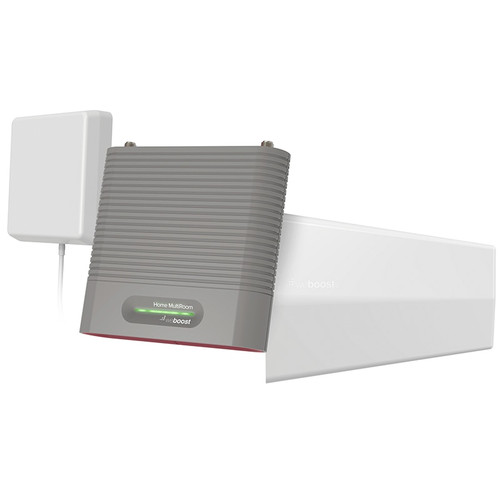
weBoost Destination RV
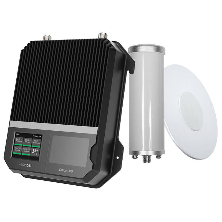
weBoost Office 200
FAQs
Are Signal Boosters Legal?
Those approved by the FCC and IC, like ours, are 100% legal.
What Are the Benefits of Cell Phone Signal Boosters?
The benefits of a cell booster include:
- Fewer dropped calls
- Improved call quality
- Reliable texting
- Enhanced data speeds
- Greater coverage
- Longer battery life
- And More!
Do Signal Boosters Need Internet to Work?
No, signal boosters do not need an internet connection to work. They just need electrical power and existing signal.
Do Signal Boosters Work Outside?
Cell phone signal boosters are not designed to work outdoors. They are meant to improve indoor cellular reception and coverage. If used outdoors, they can cause harmful interference with nearby cell phone towers.
Do Cell Phone Signal Boosters Work In Rural Areas?
Yes. As long as there is a sliver of cellular signal, a signal booster will work in rural and remote areas. A unit with high gain and high uplink power may be needed for best results to squeeze out as much signal as possible. Depending on how far your closest cell tower is, a more powerful antenna may be needed to improve range.
Do Cell Phone Booster Work in Metal Buildings?
Yes. Using coaxial cable, signal boosters are able to bypass metal walls and roofs keeping the cell signal out.
Do Signal Boosters Work With 5G?
All of our signal boosters are 5G ready and will boost any 5G signals operating on the supported frequency bands.
[View More FAQs]
Contact Us
Signal Boosters Canada is a leading provider of home cell phone signal boosters for homes, vehicles, and businesses. Don't hesitate to contact us if you have any questions about the legitimacy of cell phone signal boosters. Call us (1-800-638-6336) or email us (sales@signalboosterscanada.ca).
Once you're ready to purchase, our team of signal experts will happily help you find the best signal booster for your needs.

